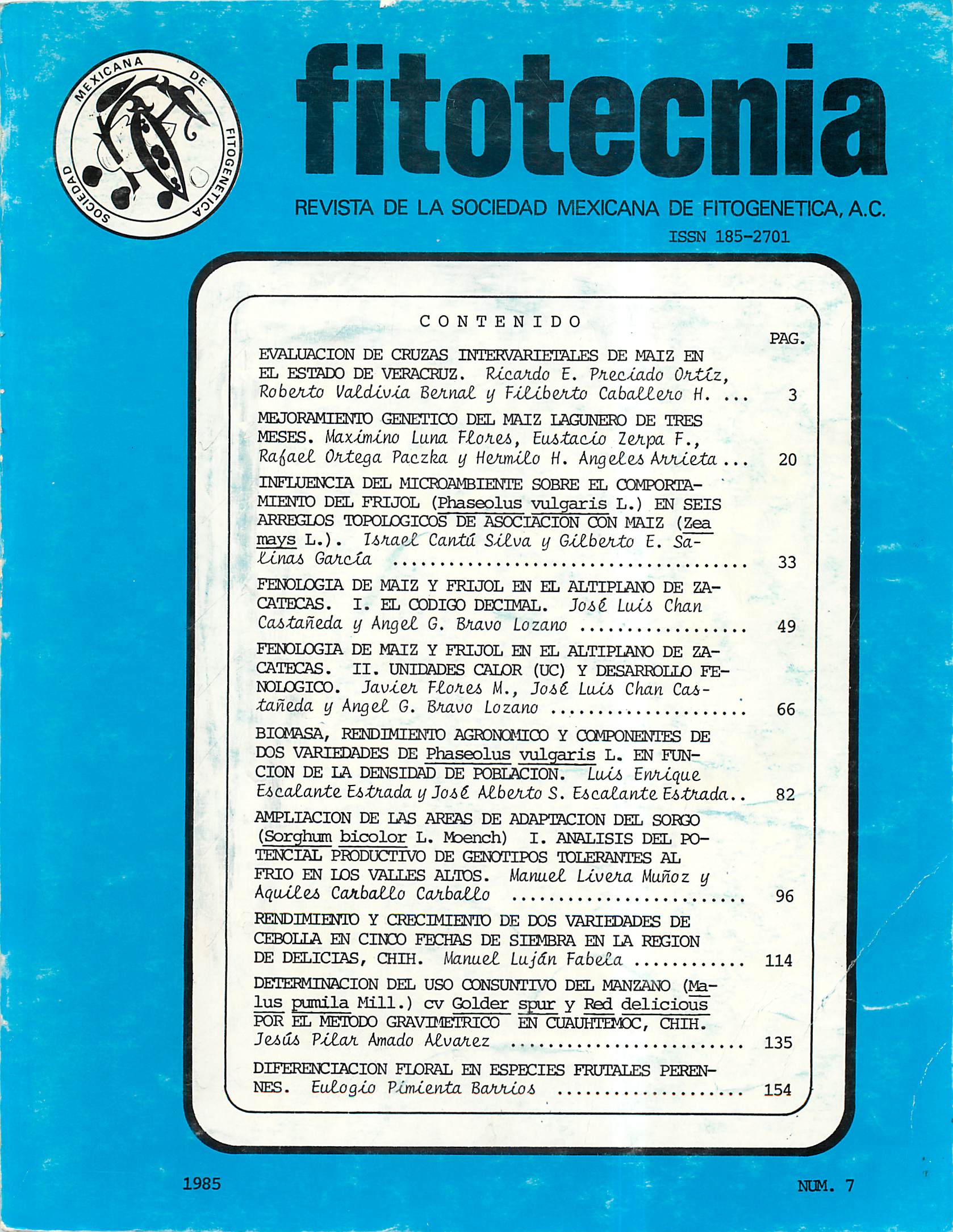PHENOLOGY OF CORN AND BEANS IN THE ZACATECAS ALTIPLANO. 11. HEAT UNITS (UC) AND PHENOLOGICAL DEVELOPMENT
Main Article Content
Abstract
The use of calendar days to predict phenological development in annual crops is not convenient because of the variability among locations and climates. Temperature is a climatic factor highly related to crop development, and heat units (HU) have been used to explain accumulative ther mal effects in plants. The objective of this study was to evaluate four methods that estimate HU in corn (exponential, physiological, residual, and residual fior cold zones), and two versions of the residual method
in dry beans (one in which base temperature was 8º C while in the other it was l0º C), in order to find the best method to explain the develpment of each crop in the highlands of Zacatecas. In 1983, results indicated that the four methods adjusted well to the phenological stages of maize as coded by the decimal code of phenology. The accumulated heat as estimated by the physiological method just reached 1700 HU, which indicates that this area has not enough heat for maize production, as compared to other production zones in the world.
In relatfon to dry beans, there were no differences between the two versions of the residual method, perhaps due to the fact that 1983 had a fresh summer. Research of this type is. lacking in order to compare heat accumulation among different production regions of this legume.

